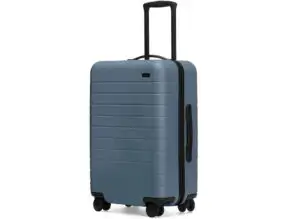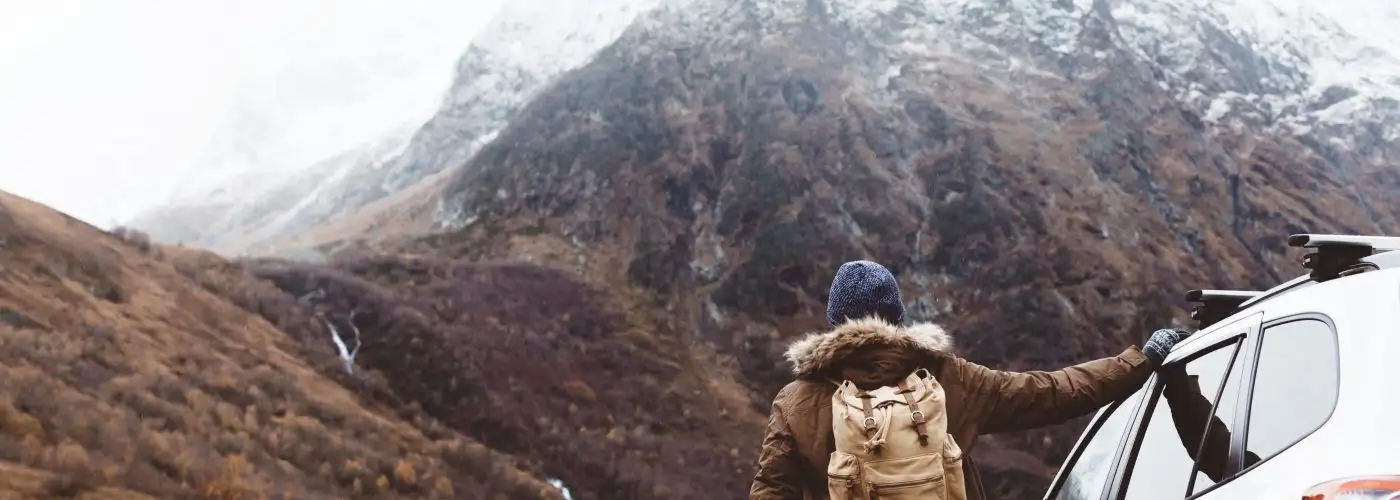Renting a car is such a common part of the travel experience that you’d think the process would be straightforward and transparent—yet somehow it is anything but. Many travelers aren’t sure how to rent a car without making a few common mistakes. Do I need to buy additional insurance? What about paying to refuel the car? I hear horror stories about phony damage claims; should I be worried? No one is around to inspect the car with me; is that OK? Can I drive into another country? Do I need all the extras they offer me at the rental counter? These questions come up pretty much every time someone rents a car. Again, anything but straightforward.
Among all your options, there are some things you don’t need to do, or even should not do, when renting a car. Below are 10 of them.
Prepaying for Gasoline
Prepaid gasoline charges appeal to the desire for simplicity while traveling, and also to concerns about being late for flights, as every few minutes added to the trip to the airport create more risk for arriving too late to board. As airport security has added considerable time to this process, rental companies have come up with new options for car refueling, and are giving them the hard sell at the rental desk.
Unless you are completely sure you will return the tank empty, or you have a pre-dawn flight that would make it worth the money not to have to refuel yourself, don’t fall for this one. Even the option where the company charges you only for fuel you actually use is tipped aggressively in the rental agency’s favor because the cost of having them refuel your car is almost always higher than the cost of doing it yourself.
To beat the rap on this one, don’t make the next mistake:
Failing to Check on Your Way Out for a Place to Refuel on Your Way Back
The best time to find a place to refuel your vehicle is immediately after you pick it up. As you are driving away from the airport or rental agency, take note of the local gas stations, and make a plan to return to the most easily accessible or best-priced of them at the end of your rental. The neighborhoods around airports can be confusing and unfamiliar, so you don’t want to be driving in circles looking for a gas station as your flight time approaches. Figure this out on your way out, when you are not pressed for time.
Purchasing Insurance, Reason No. 1: Your Own Auto Insurance Covers You
Before accepting this one at face value, it should be emphasized that auto insurance policies can vary considerably, so you will want to check with your own insurer directly. If you have the minimum legally permissible coverage, it may not include coverage for rental cars—whereas if you have what companies call “full coverage,” it almost certainly does, at least in your home country. Call or email your insurer to find out.
In general, the rule of thumb is that the coverage you have for your main vehicle extends to your rental vehicle, because the rental is considered a replacement vehicle under the policy. So if you have comprehensive coverage on your own car, your policy would also give you comprehensive coverage for the rental vehicle.
Most policies will cover you even if the rental car is a “better” or more valuable car than your own car, so you don’t have to worry if you get an upgrade or rent a much better car than the one you insure at home.
Note, however, that an accident in a rental car will typically raise your rates if you have to make a claim on your own insurance policy.
Purchasing Insurance, Reason No. 2: Your Credit Card Covers the Rest
Anything your own car insurance does not cover, it is likely that your credit card will. In some cases the credit card coverage is as good as or better than your auto insurance; in others it is intended to be secondary insurance to help cover anything your auto insurance does not.
Of course, you will need to pay for your car rental using that card; just having a qualifying credit card does not give you any protection.
Ignoring One Possible Caveat: “Loss of Use” Insurance
When a rental car is damaged, “loss of use” charges are applied to cover the potential revenue lost when the vehicle is off the road for repairs. This is typically charged in the amount of a day’s rental for that vehicle, and most auto insurance companies do not cover this fee. Many credit cards do, however; American Express, MasterCard, and Visa all offer “loss of use” coverage with rentals paid for with some of their cards. Check the terms and conditions in advance to make sure.
Ignoring Potential Offers for Upgrades
In the past, I’ve recommended reserving a low-priced car and then inquiring about upgrades at the rental desk. This works best at busy times when the garage is running low on its cheapest vehicles, and may offer you free or very affordable upgrades to a larger car class due to inventory management issues.
In most cases, the desk agent has considerable discretion in setting upgrade rates, so if he or she asks if you are interested in a larger car, respond that it depends on the price; you might find yourself in a bigger and better car at minimal additional cost.
Failing to check for AAA, AARP, Reward Program, or Other Discounts
Many membership programs establish relationships with car rental companies as a member perk. These include travel organizations like AAA, airline frequent flyer programs, age-specific organizations like the AARP, and even some sports- or hobby-focused groups. Rental car discounts are typically listed on the organization’s website; you are already paying membership dues, so have a look before booking, and you could find a great deal.
Making Too Cursory an Inspection Upon Departure
When you pick up your car, check it inside and out for anything that could potentially be considered damage before you drive away. Look for scratches, scuffs, loose parts, and working power windows and mirrors.
Keep an eye out for problems both small and big; the tendency is to take a quick walk around the car looking for scratches and blemishes, thinking that big problems would have already been noticed, but this is not always the case. I once rented a car with a loose back bumper that the car rental company had not noticed previously. If I hadn’t caught this before we left the garage and an inspector had seen it later, I would have been held completely responsible.
Your best protection here: Take photos or a video of a slow walk around the car, and “kick the tires,” so to speak.
Leaving Final Inspection to Chance
Recently, the procedure of returning cars has come to resemble checking out of a hotel, where you leave your keycard on the night table and head out the lobby door with only a wave to the front desk. Car rental returns have taken on a similar feel; as often as not, you follow signs to the back of a row of recently returned cars, take out your stuff, leave the key in the car, and walk away without speaking to anyone directly.
If it feels unsettling just to leave the car without an agent checking it over, it should; the most serious complaints about car rental companies in recent years have been disputes over damage claims. If no attendant is present at dropoff (and sometimes even when there is), the dispute later becomes your word against theirs.
Again, your best protection here is to take photos or a video of a slow walk around the car.
Crossing International Borders
Most U.S. car rental agreements do not allow you to drive the car across international borders. Additionally, your U.S. car insurance rarely covers international car rentals, so you will likely want to purchase insurance from the rental company at the time of rental.
Credit card companies may help here, as most do offer coverage in many international destinations.
Outside the U.S., policies on border crossing vary by destination and car rental agency. In some cases driving into another country is permitted if you give advance notice and/or pay an extra fee.
If you do drive across international borders without authorization and you have a problem, the protections of your rental contract, insurance, and other sources may be negated. For more information, see International Car Rental Tips.
Traveling? Get a Carry-On That Does More

3 words: lightweight, durable, & multi-functional. The Carry-On from Away makes traveling that much easier, especially with its removable, TSA-approved battery for your electronics.
More from SmarterTravel:
- The 13 Best Car Rental Booking Sites
- Car Rental Hidden Fees to Watch Out For
- 10 (and a Half) Tips for Road Trips
Editor’s note: This story was originally published in 2017. It has been updated to reflect the most current information.
We hand-pick everything we recommend and select items through testing and reviews. Some products are sent to us free of charge with no incentive to offer a favorable review. We offer our unbiased opinions and do not accept compensation to review products. All items are in stock and prices are accurate at the time of publication. If you buy something through our links, we may earn a commission.
Related
Top Fares From
Today's Top Travel Deals
Brought to you by ShermansTravel
12-Night Peru Escorted Tour, Incl. Sacred...
Wingbuddy
 vacation
$2198+
vacation
$2198+
Amsterdam to Copenhagen: Luxe, 18-Night Northern...
Regent Seven Seas Cruises
 cruise
$12399+
cruise
$12399+
Ohio: Daily Car Rentals from Cincinnati
85OFF.com
 Car Rental
$19+
Car Rental
$19+




